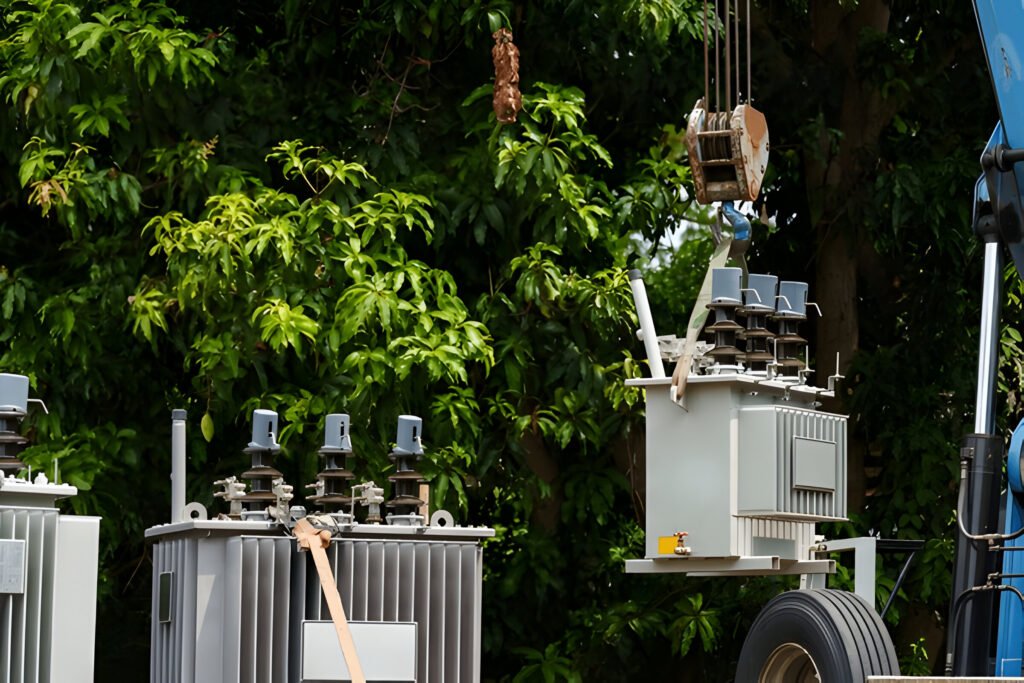Guide to Delta-Star Transformers
Learn about delta-star transformers, their applications, connections, advantages, and disadvantages in this comprehensive guide.
Read More
Distribution transformer load monitoring involves real-time tracking of a transformer’s electrical load to assess its utilization, detect unexpected grid-edge loads, and support proactive maintenance. This process is crucial for ensuring the efficient operation and longevity of electrical distribution systems, thereby enhancing grid reliability and reducing operational costs.

Distribution transformer load monitoring serves as a pivotal element in modern electrical grid management. By continuously tracking the load, or current, on distribution transformers, utility managers can assess their utilization efficiently.
This phenomenon occurs when unexpected or excessive electrical demand is placed on transformers, potentially leading to overloading and failures. Through accurate monitoring, utility companies can detect these irregularities promptly, allowing them to address issues before they escalate. This proactive approach minimizes the risk of outages and ensures a more reliable energy supply.
By analyzing load data, utilities can anticipate maintenance needs and plan upgrades or replacements more effectively. This strategic foresight aids in reducing operational costs and enhancing the overall efficiency of the power distribution network.
Sensors are integral to a DTM system, as they measure various parameters such as current, voltage, temperature, and humidity. These measurements provide a real-time picture of the transformer’s operational status. Current transformers (CTs) and voltage transformers (VTs) are commonly used to capture electrical parameters, while temperature sensors monitor the thermal condition.
The data acquisition unit collects and consolidates the information from various sensors. It serves as the intermediary between the sensors and the central processing unit. This component ensures that data is accurately captured and transmitted for further analysis. It often includes analog-to-digital converters to transform sensor readings into digital signals that can be processed by computer systems.
The communication module enables data transmission from the DTM system to a central monitoring station or cloud-based platform. Common communication methods include wireless technologies like GSM, 3G, 4G, and Wi-Fi, as well as wired connections such as Ethernet. This module ensures continuous data flow, allowing operators to access real-time transformer information remotely.
The CPU is the brain of the DTM system. It receives data from the acquisition unit and processes it to detect anomalies, calculate load metrics, and predict future performance. Advanced DTMs use algorithms and machine learning models to forecast loading trends and flag potential failures.
The user interface allows operators to interact with the DTM system. It displays processed data in an accessible format, often through dashboards and graphical representations.
A reliable power supply ensures that all sensors, data acquisition units, communication modules, and CPUs receive the necessary power to function effectively. Some systems incorporate backup power solutions, like batteries, to maintain operations during power outages, safeguarding data integrity.

Monitoring systems detect anomalies in transformer operation, such as overheating or voltage imbalances, enabling timely interventions before minor issues escalate into major failures. This proactive approach minimizes the risk of unexpected outages and costly repairs.
By continuously tracking transformer load and performance metrics, utilities can make informed decisions on asset management. This includes identifying transformers that are under or over-utilized, which aids in optimizing load distribution and scheduling maintenance activities more effectively.
Real-time data on transformer conditions allows utilities to adjust operations dynamically, enhancing system efficiency.
By reducing the frequency and severity of transformer failures, monitoring systems help in lowering maintenance and repair costs. Additionally, optimized load management can lead to reduced energy losses, providing financial benefits over time.
Continuous monitoring helps maintain transformers within optimal operating conditions, which can extend their service life. This not only defers the need for costly replacements but also contributes to sustainable management of resources.
Monitoring systems facilitate compliance with regulatory standards by providing accurate and timely data that can be used for reporting purposes. This ensures that utilities meet industry regulations and maintain public trust.
By promptly identifying potential hazards, such as insulation breakdown or oil leaks, monitoring systems play a critical role in enhancing the safety of electrical distribution networks. This reduces the risk of accidents and ensures a safer environment for both workers and consumers.